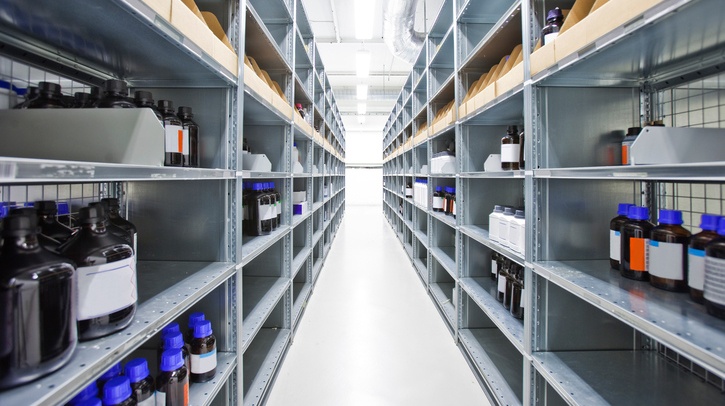
The pharmaceuticals industry operates within a complex web of logistics, where the efficient management of supplements and medicine warehouses plays a pivotal role in ensuring the seamless flow of medical products throughout the supply chain. This article delves into the strategies and best practices employed in supplements and medicine warehousing to streamline pharmaceutical logistics and drive operational efficiency.
Understanding the Dynamics of Supplements and Medicine Warehousing
Centralized Storage Facilities
Supplements warehouse and medicine warehouses serve as central hubs for the storage, handling, and distribution of a wide array of medical products, including vitamins, minerals, dietary supplements, over-the-counter medications, and prescription drugs. These facilities are strategically located within the pharmaceuticals supply chain to ensure timely access to products by healthcare providers, pharmacies, and consumers.
Temperature-Controlled Environments
Maintaining product integrity is paramount in supplements and medicine warehousing, particularly for products that are sensitive to temperature fluctuations. Many pharmaceuticals require specific storage conditions to preserve their potency and efficacy. As such, supplements and medicine warehouses are equipped with temperature-controlled environments and monitoring systems to safeguard the quality of products throughout their storage duration.
Strategies for Optimizing Supplements and Medicine Warehouse Operations
Lean Warehouse Design
Medicine warehouse layout and design are fundamental to maximizing storage capacity and operational efficiency. Warehouse managers leverage lean principles to streamline workflows, minimize wastage, and enhance productivity. By optimizing aisle widths, shelving configurations, and storage density, warehouses can accommodate higher inventory volumes while reducing unnecessary travel time and labor costs.
Automated Inventory Management Systems
The adoption of automated inventory management systems revolutionizes supplements and medicine warehousing by facilitating real-time tracking, monitoring, and control of inventory levels. Barcode scanning, RFID technology, and Warehouse Management Systems (WMS) enable seamless inventory tracking, accurate order fulfillment, and improved demand forecasting. These technologies enhance inventory accuracy, reduce stockouts, and streamline replenishment processes.
Implementing Effective Inventory Management Practices
Demand Forecasting and Inventory Planning
Predicting product demand is essential for maintaining optimal inventory levels and preventing overstocking or stockouts. Warehouse managers utilize historical sales data, market trends, and seasonal fluctuations to forecast demand accurately. By aligning inventory levels with anticipated demand, warehouses can minimize carrying costs, reduce excess inventory, and improve resource utilization.
Just-in-Time (JIT) Inventory Management
Just-in-Time (JIT) inventory management optimizes inventory levels by synchronizing replenishment with customer demand. This approach minimizes inventory holding costs, reduces storage space requirements, and enhances inventory turnover rates. JIT principles emphasize efficient order fulfillment, timely replenishment, and close collaboration with suppliers to ensure uninterrupted product availability while minimizing inventory-related expenses.
Enhancing Transportation Logistics
Temperature-Controlled Transportation
Transporting supplements and medicines requires strict adherence to temperature control protocols to prevent product degradation. Pharmaceutical logistics companies employ temperature-controlled vehicles, insulated packaging, and monitoring devices to maintain product integrity during transit. Continuous temperature monitoring and rigorous quality assurance procedures safeguard the efficacy and safety of products throughout the transportation process.
Compliance with Regulatory Standards
Pharmaceutical logistics must comply with stringent regulatory requirements to uphold product safety and quality standards. Good Distribution Practices (GDP), Hazard Analysis and Critical Control Points (HACCP), and International Air Transport Association (IATA) guidelines govern pharmaceutical transportation, ensuring adherence to safety, security, and quality protocols. Compliance with regulatory standards is imperative to mitigate risks and maintain consumer confidence in pharmaceutical products.
Conclusion: Driving Operational Excellence in Pharmaceuticals Logistics
Efficient operations in supplements and medicine warehousing are indispensable for optimizing pharmaceutical logistics and ensuring the reliable supply of medical products. By implementing lean warehouse design principles, leveraging automated inventory management systems, and adopting JIT inventory management practices, warehouses can enhance efficiency, accuracy, and responsiveness in meeting customer demand. Moreover, adherence to temperature control standards, compliance with regulatory requirements, and continuous improvement initiatives are essential for driving operational excellence and maintaining the highest standards of quality and safety in pharmaceuticals logistics.



















